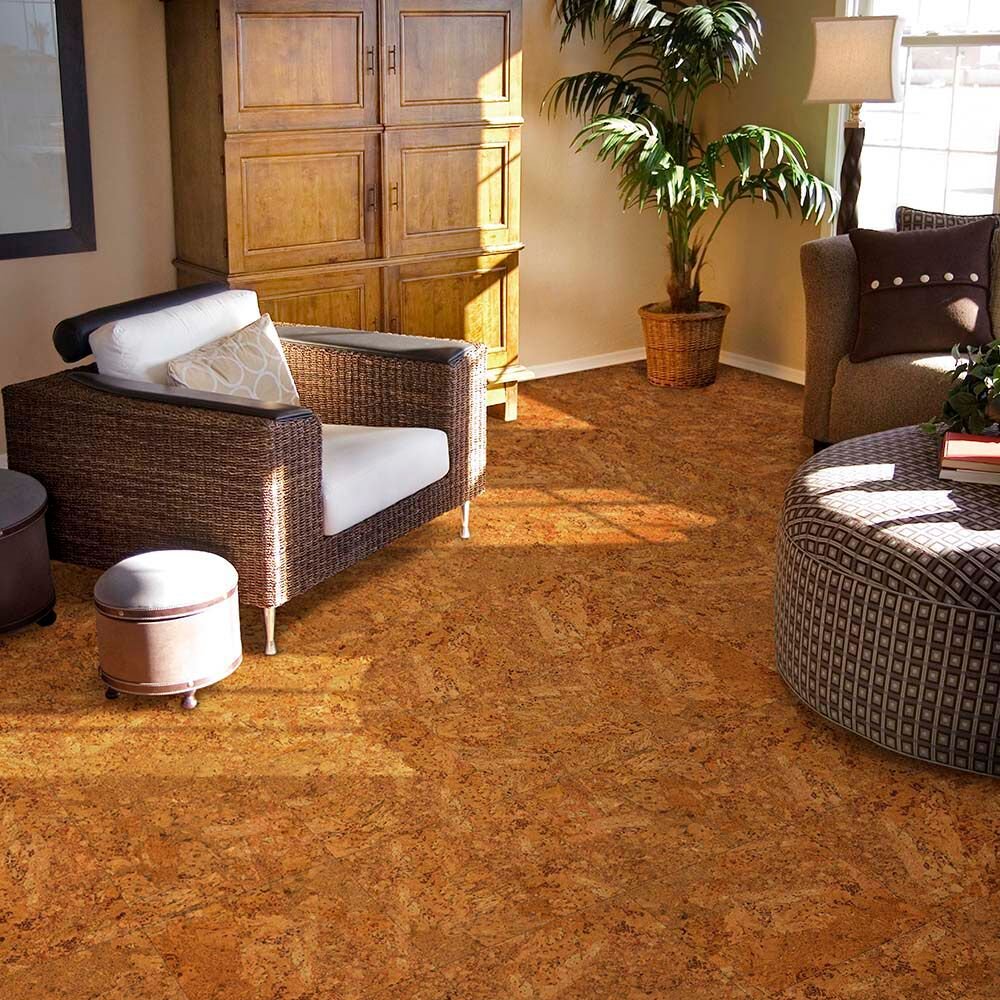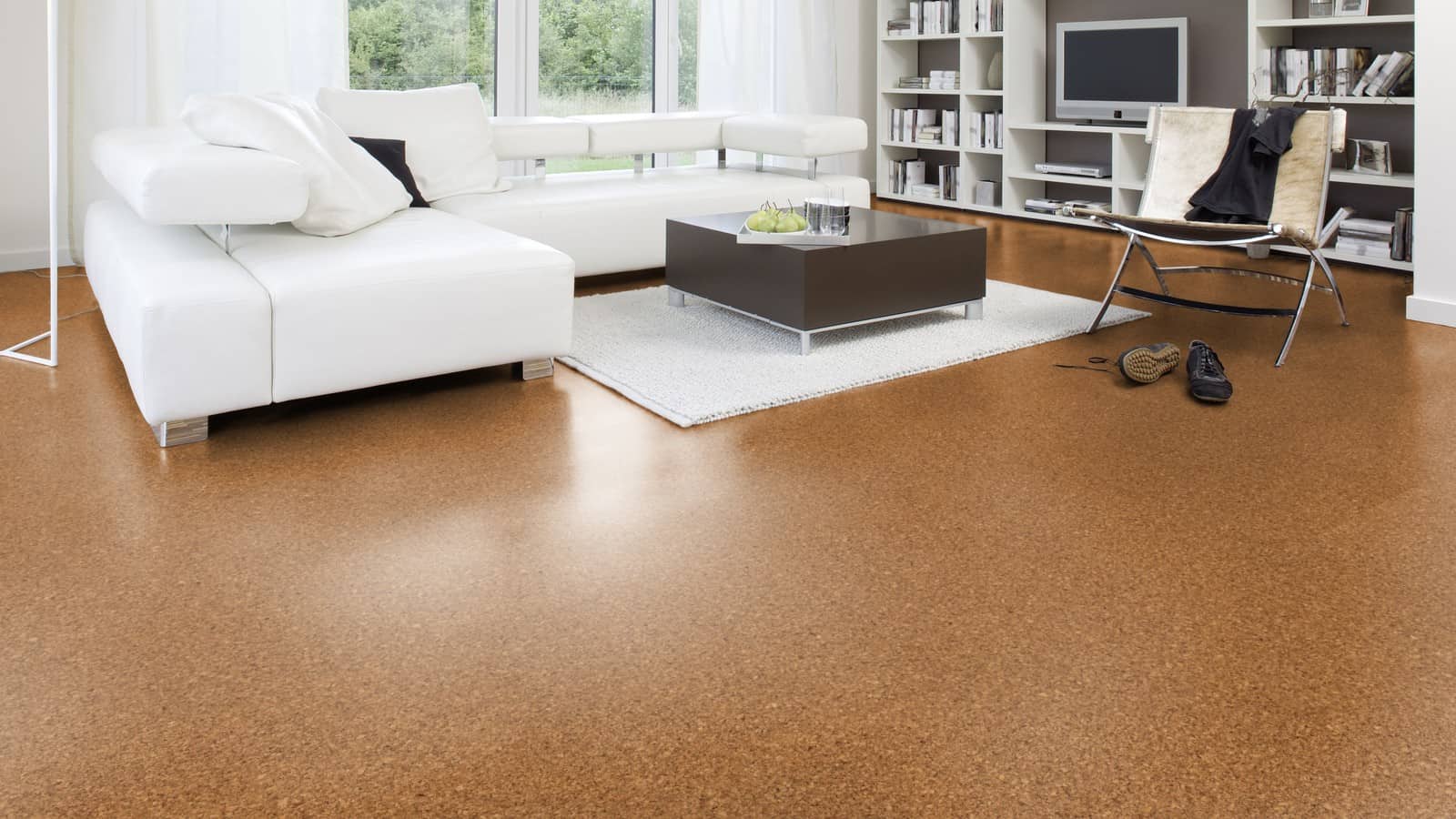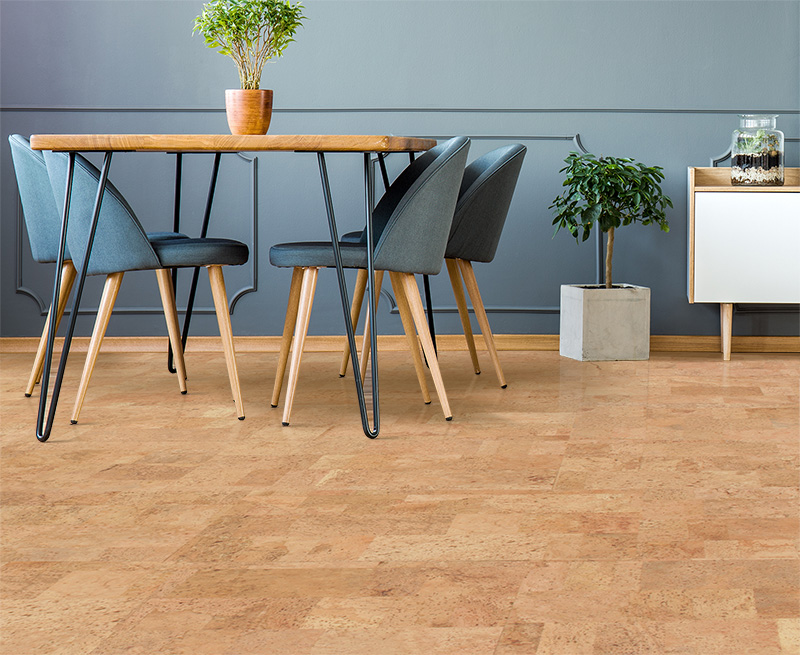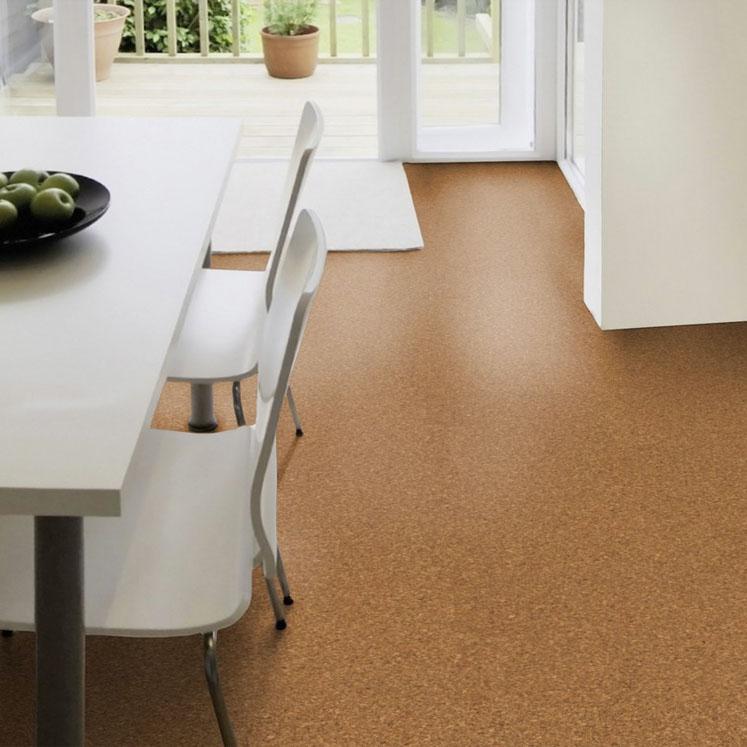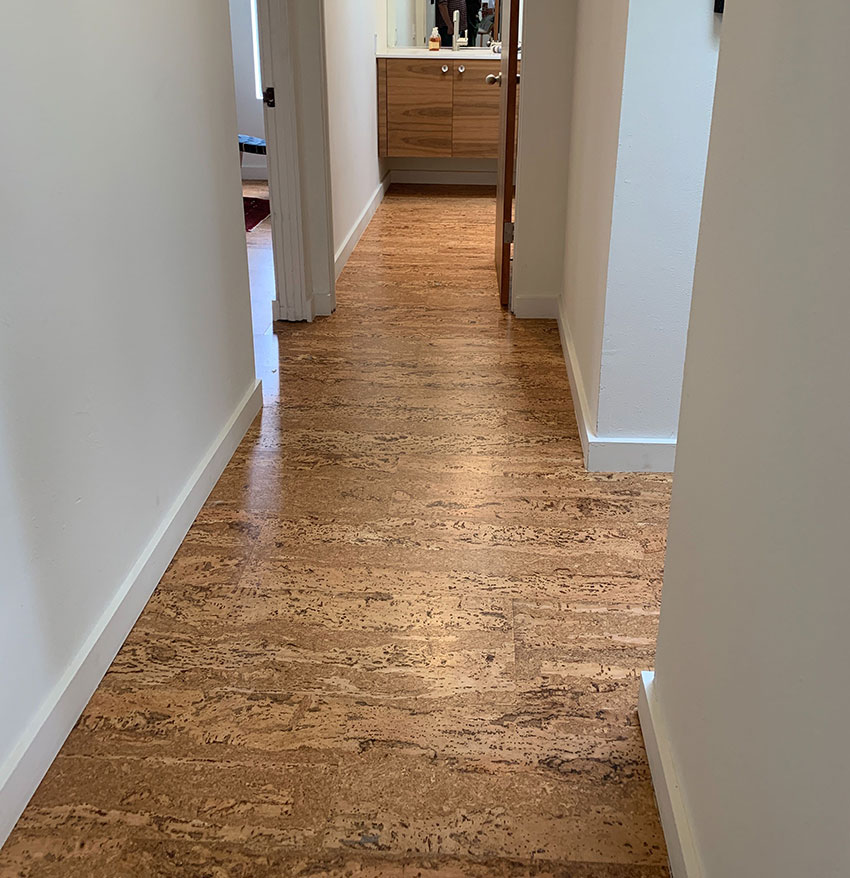Cork Flooring Interior Design
Cork flooring has been making a significant comeback in interior design, and it’s easy to see why. It’s not only sustainable and eco-friendly but also offers a unique aesthetic that can transform any space. If you’re considering cork flooring for your home, you’re in for a treat. Today I will walk you through everything you need to know about cork flooring, from its benefits and installation process to design tips and maintenance.
The Benefits of Cork Flooring
Cork flooring offers a range of benefits that make it a standout choice for many homeowners. Firstly, cork is a renewable resource. Harvested from the bark of cork oak trees, it regenerates every nine years, making it an environmentally friendly option. By choosing cork flooring, you’re supporting a sustainable industry that doesn’t harm trees.
Another significant advantage of cork flooring is its comfort. Unlike harder materials such as tile or wood, cork has a natural give that makes it more comfortable to stand on for long periods. This softness also makes it a great option for homes with children or elderly residents, reducing the risk of injuries from falls.
Cork flooring also provides excellent insulation properties. It has a unique cellular structure filled with air pockets, which makes it a natural insulator. This not only helps keep your home warm in the winter and cool in the summer but also provides sound insulation, reducing noise levels in your home.
Durability is another key benefit of cork flooring. While it might not be as hard as traditional hardwood, it’s surprisingly resilient. Cork can compress under pressure and then return to its original shape, making it resistant to dents and scratches. With proper care, cork floors can last decades.
Health-conscious homeowners will appreciate that cork is hypoallergenic and resistant to mold and mildew. Its natural properties repel dust, pollen, and other allergens, contributing to a healthier indoor environment. Cork also contains a substance called suberin, which makes it resistant to insects and mites.
Lastly, cork flooring is versatile in terms of design. Available in various colors, patterns, and finishes, cork can complement a wide range of interior styles, from modern to rustic. It can mimic the appearance of other materials like wood or stone while offering all the unique benefits of cork.

Choosing the Right Cork Flooring for Your Home
When it comes to selecting cork flooring, there are several factors to consider to ensure you choose the right option for your space. The first decision you’ll need to make is whether to opt for natural or colored cork. Natural cork has a warm, earthy tone that works well in a variety of settings, while colored cork can be customized to match your existing décor.
The type of cork flooring is another important consideration. There are two main types: floating cork flooring and glue-down cork tiles. Floating cork flooring, which clicks together over an underlayment, is easy to install and remove, making it a great choice for DIY projects. Glue-down cork tiles, on the other hand, provide a more permanent solution and are ideal for areas with high moisture levels, such as bathrooms.
Thickness is a crucial factor in cork flooring. Thicker cork floors provide better insulation and are more durable, making them ideal for high-traffic areas. However, thinner options can work well in less-trafficked rooms or for those on a budget. Generally, a thickness of 3/16 inch or more is recommended for most residential applications.
Another aspect to consider is the finish of your cork flooring. Finishes can range from matte to high gloss, and each has its pros and cons. A matte finish can provide a more natural look and hide scratches better, while a glossy finish offers a more polished appearance and is easier to clean.
You’ll also want to consider the backing of the cork flooring. Cork floors typically come with a cork backing, but some may have a foam or rubber backing for added cushion and sound insulation. The type of backing can affect the floor’s comfort, durability, and insulation properties.
Finally, consider the installation method. While some types of cork flooring are suitable for DIY installation, others may require professional installation. Floating floors are typically easier to install, while glue-down tiles can be more challenging but offer a more seamless and durable finish.
Installation Process for Cork Flooring
Installing cork flooring can be a rewarding project, whether you decide to tackle it yourself or hire a professional. The first step in the installation process is to prepare the subfloor. Cork can be installed over most types of subfloors, including concrete, wood, and tile, as long as they are clean, dry, and level. Any imperfections in the subfloor should be addressed to prevent telegraphing through the cork.
Acclimating the cork flooring is an essential step before installation. Cork is a natural material that can expand and contract with changes in humidity and temperature. It’s crucial to let the cork acclimate to your home’s environment for at least 48 hours before installation to minimize the risk of expansion or contraction after installation.
If you’re installing a floating cork floor, you’ll need to lay down an underlayment first. The underlayment provides additional insulation, soundproofing, and moisture protection. Some cork flooring comes with an attached underlayment, which simplifies the installation process.
For glue-down cork tiles, you’ll need to apply a layer of adhesive to the subfloor using a trowel. It’s important to follow the manufacturer’s instructions for the type of adhesive and the application method to ensure a strong bond. The adhesive should be left to set until it becomes tacky, which can take anywhere from 30 minutes to a few hours.
Once the adhesive is ready, carefully lay the cork tiles in place. It’s a good idea to start from the center of the room and work your way out to ensure even spacing. Use a rolling pin or floor roller to press the tiles firmly into the adhesive, ensuring a secure bond. Make sure to stagger the seams for a more natural appearance and added stability.
After the flooring is installed, it’s important to let the adhesive cure fully, which can take up to 72 hours. During this time, avoid walking on the floor or placing heavy furniture on it. Once the adhesive has cured, you can apply a sealant to protect the cork and enhance its durability. A polyurethane sealant is a popular choice for its ability to resist water and stains while providing a smooth, easy-to-clean surface.
Design Tips for Incorporating Cork Flooring
Cork flooring can be a versatile addition to any home, offering both aesthetic and functional benefits. One of the first things to consider when incorporating cork flooring into your design is the color scheme. Cork is available in a range of colors, from light blondes to deep browns. Lighter shades can help make a room feel larger and more open, while darker tones add warmth and coziness.
The pattern is another aspect to consider. Cork flooring comes in a variety of patterns, from subtle textures that mimic natural wood grains to bold, geometric designs. For a classic look, you might opt for a simple, natural pattern. If you’re looking to make a statement, a more intricate design could be the way to go. The pattern you choose should complement the overall style of the room and not overwhelm the space.
Cork’s unique texture can add depth and interest to a room. Unlike smoother flooring options, cork has a natural texture that can enhance the tactile experience of a space. This can be particularly effective in minimalist or modern interiors, where texture plays a crucial role in adding visual interest.
Pairing cork flooring with the right furnishings and décor can elevate your interior design. Because cork has a warm, natural look, it pairs well with other natural materials like wood, stone, and leather. It also works well with a variety of color palettes, from earth tones to bold, contrasting hues. Consider how your furniture, rugs, and accessories will interact with the cork flooring to create a cohesive look.
Lighting can also have a significant impact on how cork flooring looks in a room. Natural light will bring out the warm tones and subtle patterns in the cork, while artificial lighting can highlight its texture. Consider the lighting in your room and how it will interact with your flooring choice to create the desired ambiance.
Finally, think about the flow of your home and how cork flooring will work throughout different spaces. Cork is versatile enough to be used in a variety of rooms, from kitchens and living rooms to bedrooms and basements. It’s especially well-suited for open-concept designs, where a consistent flooring choice can help unify the space.
Maintenance and Care Tips
Caring for cork flooring is relatively straightforward, but there are some key considerations to keep in mind to ensure its longevity. Regular cleaning is essential to keep cork flooring looking its best. Sweep or vacuum your cork floors regularly to remove dirt and debris that can cause scratches. For deeper cleaning, use a damp mop with a mild detergent designed for cork flooring.
Protecting your cork flooring from moisture is crucial. While cork is naturally water-resistant, excessive moisture can cause it to swell and warp. Wipe up spills immediately and avoid using excessive water when cleaning. In areas prone to moisture, such as kitchens and bathrooms, consider using mats or rugs to provide additional protection.
Furniture can cause dents or scratches in cork flooring, so it’s a good idea to use furniture pads or coasters under heavy pieces. When moving furniture, always lift rather than drag to avoid damaging the floor. For chairs and other furniture that is frequently moved, consider using felt glides to minimize wear and tear.
Reapplying a sealant every few years can help maintain the appearance and durability of your cork flooring. The frequency of resealing will depend on the amount of traffic your floors receive and the type of sealant used. A fresh coat of sealant can protect against scratches, stains, and moisture, ensuring your floors remain in great condition.
Direct sunlight can cause cork flooring to fade over time. To prevent this, use curtains or blinds to limit exposure to direct sunlight, especially in rooms with large windows. UV-protective window films can also help reduce the impact of sunlight on your floors.
If your cork floor does become damaged, it’s often possible to repair it rather than replace the entire floor. Minor scratches and dents can sometimes be sanded out and refinished. For more significant damage, individual tiles or planks can be replaced. Keeping extra tiles or planks on hand after installation can make repairs easier.
Why Choose Cork Flooring Over Other Options?
There are several reasons why cork flooring might be a better choice compared to other flooring options. One of the most compelling reasons is its sustainability. Unlike hardwood flooring, which requires the cutting down of trees, cork is harvested from the bark of cork oak trees, which regrows, making it a much more sustainable option.
Cork flooring is also more comfortable underfoot than harder flooring options like tile or stone. Its natural cushioning effect makes it a great choice for areas where you’ll be standing for long periods, such as kitchens or workshops. This comfort can reduce fatigue and make a big difference in how your space feels.
The insulation properties of cork flooring can provide significant energy savings over time. Because cork is a natural insulator, it helps to maintain a consistent temperature in your home, reducing the need for additional heating or cooling. This can lead to lower energy bills and a smaller carbon footprint.
Cork’s natural sound-absorbing properties make it an ideal choice for multi-story homes or apartments where noise can be an issue. Unlike harder flooring options, which can amplify sound, cork absorbs noise, making your home quieter and more peaceful. This can be particularly beneficial in children’s playrooms, home offices, or bedrooms.
The aesthetic versatility of cork flooring is another reason to consider it over other options. With a range of colors, patterns, and finishes available, cork can complement virtually any design style, from traditional to contemporary. This versatility allows you to create a unique look that suits your personal taste and the overall aesthetic of your home.
Finally, cork flooring is relatively easy to install and maintain, making it a cost-effective option over the long term. Whether you’re a DIY enthusiast or prefer to hire a professional, cork flooring offers a straightforward installation process. Its durability means it will last for years with minimal maintenance, making it a wise investment for any home.
Common Mistakes to Avoid with Cork Flooring
Skipping the Acclimation Process
One of the biggest mistakes homeowners make with cork flooring is skipping the acclimation process. Cork is a natural material that can expand and contract with changes in temperature and humidity. Not allowing your cork flooring to acclimate to the room’s environment for at least 48 hours before installation can lead to gaps or buckling down the line.
Ignoring Subfloor Preparation
Proper subfloor preparation is crucial for a successful cork floor installation. A subfloor that is uneven, dirty, or damp can lead to various issues, including adhesive failure and visible imperfections. Always ensure that the subfloor is clean, dry, and level before installation to prevent these problems.
Using the Wrong Cleaning Products
Cork flooring requires specific cleaning products to maintain its integrity. Using harsh chemicals, abrasive cleaners, or excessive water can damage the cork and strip away its protective sealant. Always use a mild detergent and a damp mop designed for cork floors to keep them looking their best.
Not Protecting Floors from Furniture
Heavy furniture can cause dents and scratches in cork flooring. Failing to use protective pads or coasters under furniture can lead to visible damage over time. Always use felt pads under furniture legs and avoid dragging heavy items across the floor to protect your cork flooring.
Neglecting Regular Maintenance
Cork flooring requires regular maintenance to retain its beauty and durability. Neglecting to sweep, vacuum, or mop regularly can lead to the accumulation of dirt and debris, which can scratch the floor. Regular maintenance, including resealing every few years, is essential for the longevity of your cork floors.
Exposing Floors to Excessive Sunlight
Direct sunlight can cause cork flooring to fade and discolor over time. Not taking steps to protect your floors from excessive sunlight can lead to uneven fading and a less attractive appearance. Use curtains, blinds, or UV-protective window films to protect your cork flooring from the damaging effects of the sun.
Is cork flooring suitable for all rooms in the house?
Cork flooring is versatile and can be installed in many rooms throughout the house, including living rooms, bedrooms, and even kitchens and bathrooms. However, in areas with high moisture, such as bathrooms, it’s important to ensure proper sealing and maintenance to prevent water damage. Its natural warmth and sound-absorbing qualities make it especially suitable for bedrooms and living areas where comfort is a priority.
How does cork flooring hold up to pets?
Cork flooring is a great option for homes with pets due to its durability and resilience. It’s resistant to scratches and dents, thanks to its natural ability to compress and recover. However, it’s still important to keep your pet’s nails trimmed and to clean up any accidents promptly to maintain the flooring’s condition. Additionally, a high-quality sealant can provide extra protection against scratches and stains.
Can cork flooring be installed over radiant heating?
Yes, cork flooring can be installed over radiant heating systems. Its natural insulating properties allow it to conduct heat efficiently, making it an excellent choice for homes with underfloor heating. However, it’s essential to follow the manufacturer’s guidelines regarding installation over radiant heating to ensure the floor’s longevity and performance.
What is the lifespan of cork flooring?
With proper care and maintenance, cork flooring can last for several decades. On average, cork floors have a lifespan of 25 to 40 years, depending on the quality of the material, the level of foot traffic, and how well they are maintained. Regular cleaning, resealing, and protecting the floor from excessive moisture and sunlight can help extend its life.
Is cork flooring environmentally friendly?
Yes, cork flooring is considered one of the most environmentally friendly flooring options available. Cork is harvested from the bark of cork oak trees, which regenerates every nine years, making it a renewable resource. Additionally, cork flooring is often made from the byproducts of wine cork production, reducing waste. Its insulating properties also contribute to energy efficiency, further enhancing its eco-friendly credentials.
How do I repair damaged cork flooring?
Repairing cork flooring depends on the extent of the damage. Minor scratches and dents can often be sanded down and refinished. For more severe damage, such as deep gouges or water damage, individual tiles or planks can be replaced. It’s a good idea to keep extra tiles or planks from the original installation for such repairs. If the damage is widespread, it may be more cost-effective to replace the entire floor.
Related Posts:

